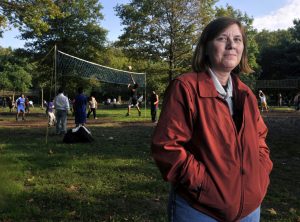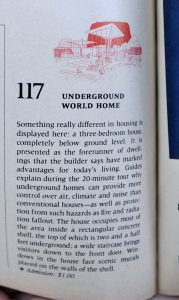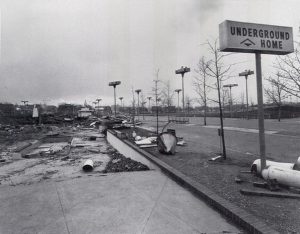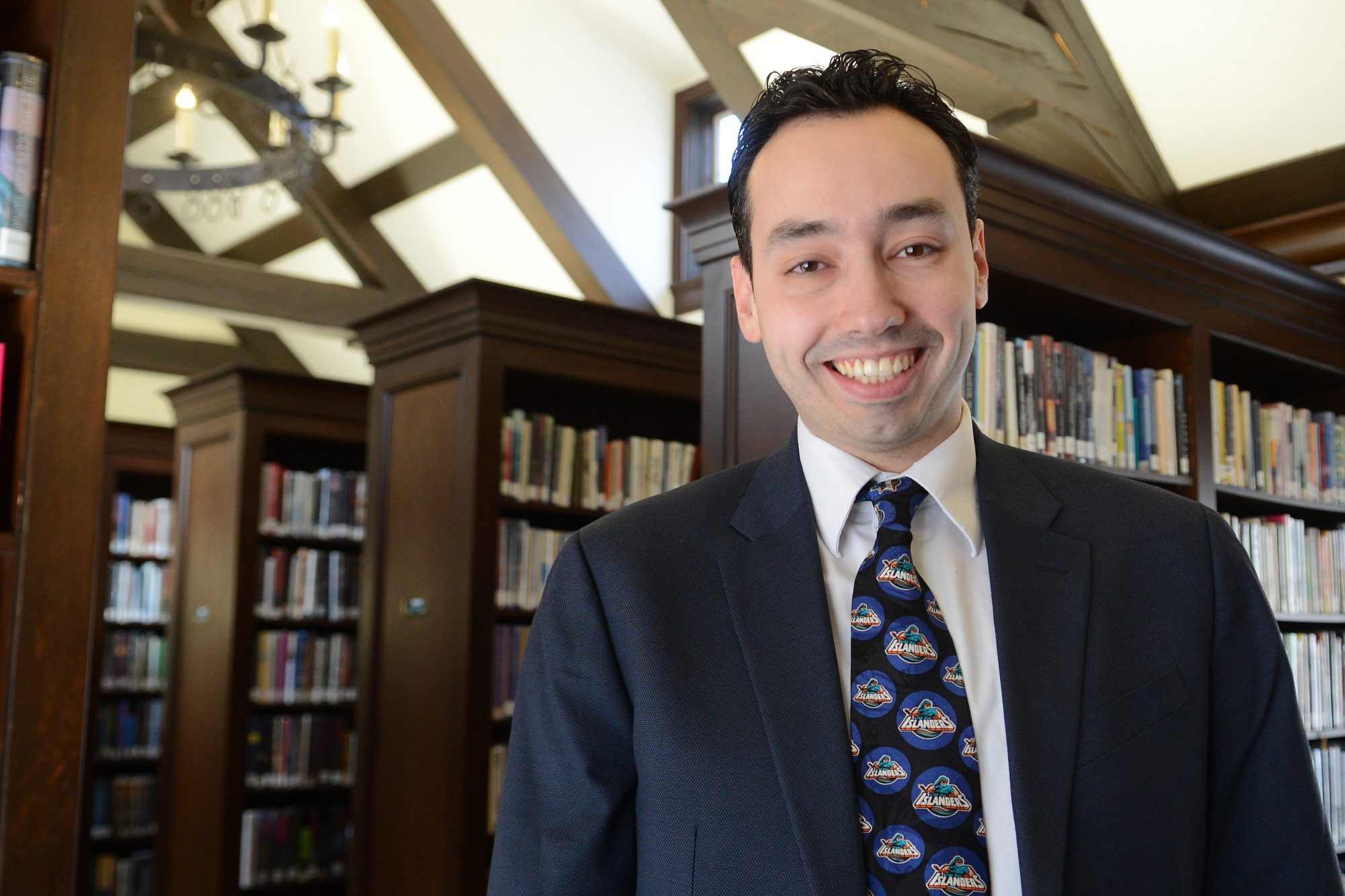By Nicholas Hirshon
Published October 17, 2012
Narratively
A mid-afternoon rainfall has saturated the dirt just enough that Dr. Lori Walters easily unearths some with the tip of her black loafer. A few yards away, groups of Latino men in bright t-shirts and blue jeans are playing a casual game of volleyball, bumping but never spiking, on a lazy Sunday in Flushing Meadows-Corona Park, the largest park in Queens.
Dr. Walters is tired. She has been on her feet for much of the past two days, running an exhibit at a science fair teeming with children and parents. Her fingers brush back strands of brown hair that a gentle wind has blown out of place, and she tucks her hands into the large pockets of a maroon jacket. Her slender body is weary, her voice cracking, and she still has a long trek home to Florida, where she is a history professor.

A wayward volleyball—actually an old soccer ball, which serves the same purpose—hits the hard ground with a thud. Greenery envelops most of Flushing Meadows-Corona Park, but not here, where patches of brown grass sprout between large swaths of exposed dirt. Saplings never seem to stand a chance.
Surely, trampling takes a toll on the turf. But can that be enough to stop the growth of trees? Might something be down there, obstructing their existence?
Dr. Walters perks up.
“It’s a mystery,” she says, beaming. “Is it there? What does it look like?”
She grows eager and smiles, wondering if something, anything, remains at this spot from nearly half a century ago, when it was transformed into Block 50, Lot 5, at the 1964 World’s Fair.
“We could probably figure out something at this moment if we wanted to just dig.”
Size mattered at the World’s Fair—especially height. Spread across nearly a square mile of Queens were hundreds of exhibits from states, countries and corporations that equated altitude with esteem. The Unisphere, a stainless steel globe that came to symbolize the fair, towered twelve stories tall. Elevators dubbed Sky Streaks whisked passengers 226 feet to the observation deck of the hulking New York State Pavilion. Other attractions had spires or high-pitched roofs.
But not at Block 50, Lot 5.
“Most of the architectural highlights of the World’s Fair spiral skyward,” the New York World-Telegram & Sun reported on November 18, 1963. “And then there’s the Underground World Home.”

In the lead-up to the fair, the New York press marveled at the newly constructed subterranean dwelling that most knew simply as the Underground Home. The Wall Street Journal welcomed “a new frontier for family living.” The Herald Tribune extolled the virtues of living with “good old earth on all sides.” By the time the fair opened on April 22, 1964, the Underground Home had already generated headlines in all the major dailies.
Jay Swayze was delighted. A lumber dealer and home builder from Plainview, Texas, Swayze designed the Underground Home in the aftermath of the Cuban Missile Crisis, when many Americans feared an impending nuclear attack. Families hurried to build fallout shelters, but many of them were bland and cramped. Swayze began tinkering with spacious underground homes suitable for year-round living.
Protection from radioactive fallout, as well as everyday noise and pollution, lured a bold-faced name to Swayze’s work. In 1964, Girard Henderson, who sat on the board of directors of Avon Products, the beauty manufacturer, had an underground residence built for him in Colorado. He was so enthralled that he financed Swayze’s Underground Home at the World’s Fair, convinced that the masses would buy into subsurface living, too.
Swayze’s team scored a plot on the fairgrounds between the Hall of Science and the Port Authority Heliport, and they began to dig fifteen feet into the Flushing Meadows marsh. Within a few months they had created a concrete shell of about 12,000 square feet and installed the home’s gypsum board ceilings. Candelabras sat on the Steinway & Sons piano in the living room. A simulated garden featured a bed of plastic flowers, artificial wisteria and an organ.

Like other exhibits at the fair, the Underground Home incorporated many novel accoutrements. A snorkel-like system pumped air into the ten-room house. The lighting allowed residents to pick the time of day and the season they wanted with just the turn of a knob—like “midnight at noon” and “summer in winter,” as Swayze bragged. He also installed “dial-a-view,” which let occupants pick the murals they would see through the windows. One of the choices was a knight riding a horse to a castle.
The Underground Home was billed as “sub-urban,” in keeping with the clever marketing that permeated the fair. But it was not like other exhibits. A glance at a bookshelf inside the home underscored the chief motivation for buying such a dwelling. One book was titled “Our New Life with the Atom.” Another was “Foreign Policy Without Fear.”
The Miami News ran a telling caption with its profile of the home’s interior designer, Marilynn Motto: “Her designs are enough to calm a subterranean dweller during an H-bombing.”
These reminders of a nuclear age seemed out of place at a fair with so many bright visions of “the world of tomorrow today.” The fair embraced a theme of “peace through understanding,” while the Underground Home was most appealing to visitors who didn’t think peace would last very long.
“The idea of an underground home in ’61 or ’62 was to protect you from the Soviets—the evil, nasty Soviets,” Dr. Walters says. “Along comes the Cuban Missile Crisis, and you realize we can blow ourselves off the planet.”
Swayze deemed his exhibit a success. Fifteen years after the fair ended, he published a book on underground living that described a parade of visitors roaming the Underground Home, all of them declaring, “This is a dream world.” He boasted that more than 1.6 million people had visited the home, a stunning total.
By most other accounts, the Underground Home was a flop. At a fair where many popular exhibits were free, it had an admission price of a dollar for adults and fifty cents for children. Some doubt that the home enjoyed so many visitors when other, more thrilling, attractions charged nothing at all. General Motors had set up a free ride called Futurama, where passengers witnessed scenes of a jungle, the moon and a futuristic city that had moving sidewalks and midtown airports. Walt Disney designed the equally impressive, and equally gratis, Magic Skyway ride at the Ford Pavilion.
Swayze’s bottom line may have also been hurt by the lack of souvenirs he sold. Only two were available at the Underground Home: an eight-page brochure on underground living, few of which survive today because few were probably bought, and an LP record by Grammy Award-winning singer Johnny Mann, a friend of Henderson, the underground home aficionado and Avon board member.
Also sold, of course, were the homes themselves, at the hefty price of $80,000 each, more than half a million dollars by today’s standards. But visitors, it turned out, were unwilling to radically alter their lifestyles and plunk down so much money on what amounted to an experiment. Near the end of the fair’s first season, the New York Times reported that not a single underground home had been sold.
After the fair ended in the fall of ’65, most of its attractions were demolished so the city could transform the sprawling space into what would become the 1,250-acre Flushing Meadows-Corona Park. Only a few structures evaded the wrecking ball, and most of them remain today, including the Unisphere, the New York State Pavilion, the Hall of Science (later re-branded as the New York Hall of Science) and the Port Authority Heliport (now a catering hall dubbed Terrace on the Park). The rest had to be torn down by the exhibitors, as mandated by their contracts.

Some, however, believe that Swayze, wanting to avoid high demolition costs, removed furnishings from the Underground Home but left its shell intact, hidden beneath several feet of dirt.
“I doubt that Mr. Swayze did more than he had to,” says Bill Cotter, who has written several books on world’s fairs.
Cotter visited the Underground Home on one of many adolescent treks from Long Island to the fair, as part of a personal pledge to see every exhibit at least once. Now 60, he helps run a message board known as the World’s Fair Community, where Baby Boomers who attended the fair have united to reminisce. Many of them had never before been exposed to such culture and technology, so they rank their visits to the expo among the most memorable experiences of their lives. They recall eye-opening demonstrations of computers and picture phones. They remember waiting in long lines at the Vatican Pavilion to glimpse Michelangelo’s Pietà, walking through the Sinclair Oil exhibit to check out the moving dinosaur figures, and visiting the Belgium Village for a taste of a delicacy that would become known as a Belgian waffle.
One of the most popular topics on the message board is what became of the Underground Home. Lively discussions on the site have revealed two prevailing views: Some think that parts of the Underground Home may still exist, while others doubt Swayze left anything behind.
It’s clear where Cotter stands: “If you had a chance to just cover it with dirt and run like hell, or spend money to rip things out, which of the two options would you take?”
So Dr. Walters feels that she has no other choice. She must dig.
“It’s probably been roaming around in my head for at least five or six years,” she admits on a recent Sunday afternoon in the park, clutching a worn guide to the World’s Fair.
Dr. Walters did not attend the fair; in fact, she wasn’t even alive then. But in high school she became interested in American history after World War II, leading to research on the fair and eventually the Underground Home. She feels the home nicely bridges two eras: Its conception was rooted in the Cold War mentality of the 1950s, but it debuted at a world’s fair that is considered one of the most significant cultural events of the ’60s, attended by about 51 million people.
Dr. Walters landed funding a few years ago for another World’s Fair project after winning support from the University of Central Florida, where she teaches post-war U.S. history. She partnered with the New York Hall of Science and the Queens Museum of Art—both of which occupy buildings used at the ’64 fair—to create a virtual, Internet-based re-creation of the fairgrounds, known as “Come Back to the Fair,” which is slated to be unveiled soon.
To excavate the Underground Home, Dr. Walters plans to rely again on her university. She hopes her archeologist colleagues will guide the search, perhaps with financial backing from the university, grants and private foundations. (She has already secured grants for her virtual re-creation of the fair from the National Endowment for the Humanities and the National Science Foundation.)
With monetary aid, Dr. Walters says her team could rent ground-penetrating radar and scan for anything unusual beneath the dirt. If the crew detects something, they could dig holes large enough for endoscopic cameras that might reveal if the home is still structurally intact or even furnished, as some believe. Eventually, she hopes to utilize camera-enabled robots that would be easier to control.
For Dr. Walters, the project is largely an educational tool. She envisions opening the dig to streams of school children visiting the New York Hall of Science, which casts a shadow on the Underground Home site. Each of the children could have a hand in controlling the robots.
“Everybody thinks of archeology, and they think of going down to Mexico or Egypt or Jordan, but there are a lot of wonderful 20th-century sites,” she points out. “It’s not like something that’s two thousand years old, finding some Egyptian medallion or something like that, but it still gives you the same understanding of the process.”
She is currently developing an excavation proposal for the city Parks Department, which cares for the former fairgrounds, and she is eyeing the summer of 2014, the fiftieth anniversary of the fair’s opening, as the ideal time for a dig.
Winning city approval may take some convincing, though. Officials don’t think the Underground Home still exists.
Zachary Feder, a spokesman for the Parks Department, declined to comment on whether the city would approve an excavation, citing the lack of a formal proposal. In a terse email, he also wrote that the Underground Home was demolished after the fair “to the best of our knowledge.” As proof, he attached a black-and-white photograph that shows debris scattered on the ground above the exhibit. The caption describes the scene as “demolition.”
The picture, though, is not persuasive evidence of the home’s destruction. The shot shows only the surface, where most of the Underground Home was never visible. In fact, the photograph seems to support theories that parts of the home were never torn down: rising about a foot above the dirt are what appear to be three walls.
It’s not enough to convince Steven Quinterno, 22, who recently graduated with a history degree from Carnegie Mellon University in Pittsburgh. This spring, Quinterno was watching “Men in Black 3” with some friends, and they began joking about the conspiracy theories propagated by the film franchise. In the first movie, in 1997, the New York State Pavilion was depicted as merely a ruse to mask alien spaceships. By the third one, secret agents zoomed past the Unisphere and met with a prescient alien at Shea Stadium, which opened in the park the same year as the ’64 World’s Fair.
Quinterno got to thinking. His dad had visited the fair and described its enormity to Steven, who couldn’t comprehend how the Underground Home might actually remain beneath the park. “How can something that was part of this gigantic, prominent festival just be forgotten?” he wondered. Quinterno went on to read several books on underground homes, including Swayze’s. He even tracked down Girard Henderson’s nephew, who politely said he didn’t know much about the Underground Home.
Quinterno also scoured the online database of the New York Public Library, where he found listings for records relating to the home. Busy studying for final exams, he asked a friend from Long Island to go to the library, scan the documents and email them to him in Pittsburgh. These papers, he believes, finally shed light on the official fate of the Underground Home: a pair of memos sent to then-Parks Commissioner Robert Moses in June 1966 listed the home among the exhibits that “completed demolition.” But Quinterno isn’t satisfied. Like Dr. Walters, he still wonders how thoroughly the fair corporation inspected the dismantling of exhibits. There were, after all, hundreds to tear down.
Quinterno, too, wants to excavate the site. He made clear that he does not wish to compete with Dr. Walters, but he feels he may have better connections to launch a dig. He figures that Carnegie Mellon might be in a stronger position to ship its own ground-penetrating radar to Queens than Dr. Walters’ university, a thousand miles away; Dr. Walters, meanwhile, is exploring the viability of renting equipment.
“It’s not something that I’m in a rush to claim or anything,” Quinterno stresses, adding that he senses a calling to find the Underground Home.
“There’s something down there,” he says with absolute certainty, “and it’s something of a time capsule.”
“You’re not going to get it back by saving the few little relics,” he says. Jokingly, he imagines some fair enthusiasts trying to pull the Underground Home up from the park and haul it away on the Grand Central Parkway with a semi.
That hasn’t happened yet, but some amateurs have tried to unearth the home with little more than a shovel and a crusading spirit.
About two years ago, John Piro, a contractor from Long Island, and Mitch Silverstein, a lab researcher from Nyack, secured a permit from the Parks Department to dig on the site. (They sought and received a blanket permit to dig in any city park, without revealing their motive.)
Piro, 63, who played in a band at the fair, had decided to search for the Underground Home after engaging in chatter about it on the World’s Fair Community site.
The permit allowed Piro and Silverstein to use only a small shovel. They thought that such a manual effort would take too much time and displace too much dirt, all of which they’d have to put back. Instead, the pair stuck a steel rod in the dirt and pounded on it with a shovel to see how far down they’d get.
Piro is gleeful as he recalls what happened. “We were hitting that baby all the way,” he says, referring to the steel rod. “And this baby—boom!—stopped at that four-and-a-half-foot mark. We definitely hit something.”
During the fair, the home was beneath about three feet of dirt, and Piro believes its remains were buried a little deeper—perhaps a foot-and-a-half deeper—after the expo. The home, he imagines, could still be down there.
“It’s the only pavilion that you might be able to go into,” he says. “If you broke into that encasement, there might be furniture in there. You don’t know.”
It’s not surprising that he picked the enormous globe for that romantic moment. It appears in thousands of family photographs from the fair, with smiling families lining up for a must-have shot. Not so for the Underground Home. It was relatively dark and not conducive to photographs; in the days before cameras had memory cards, a visitor didn’t want to waste a valuable exposure on a shot that might not come out. Besides, the tables and murals in the Underground Home weren’t nearly as picturesque as the Unisphere, or the General Motors or Ford pavilions.
Still, Callaway is captivated by the Underground Home. It has a powerful mystique—like a time capsule unseen for half a century. The fact that there are so few photos of the home itself adds to its allure. So Callaway decided to bring the story to the masses, without raising a shovel.
Six years ago, he became an executive producer and writer for “CSI: NY,” and he began thinking about how to work the Underground Home into an episode. “I knew pretty much from the first time I joined the show,” Callaway remembers. “I was determined to play with that Underground Home lore.”
Nearly five decades removed from public consciousness, the Underground Home made a comeback in an episode named “Manhattanhenge” in November 2009. The show picks up with detectives investigating the so-called Compass Killer, who was once an urban planner before his wife’s death drove him insane. Since the killer has an intimate knowledge of the city, he descends into the sewers beneath Queens, breaks through a wall and enters the Underground Home. From this secret lair, the madman plots his devastating crimes.
The show imagines the place as fully furnished and almost pristine. The “CSI” designers took some liberties with the furnishings of the Underground Home, like adding a gas-powered generator to explain how the killer has light down there. But much of the design was based on the original floor plans from the fair. Shaggy carpeting dated the living room to the 1960s, as did the period sofas, tables and lamps. Even a “dial-a-view” mural was included, this one with a vintage backdrop of New York City.
Acknowledging the passing of time at the Underground Home, the “CSI” team treated the bed sheets and wallpaper with chemicals to make them look older. But the home appeared mostly intact, with few visible signs of water damage and none of the furniture askew. Callaway doubts the real home has fared so well.
“Even if they left everything, it would be so heavily deteriorated that it would be beyond recognition,” he says. “The ravages of soil and water and all of that combined—if there is anything down there, it’s probably a muddy, soupy shambles.”
Talk of an excavation reminds Callaway not of his own work but of another small-screen moment.
In 1986, Geraldo Rivera hyped a TV special called “The Mystery of Al Capone’s Vaults.” Capone, the notorious Chicago gangster, had supposedly stashed valuables below one of the swankiest hotels in the city, and construction crews were going to bust open the vaults for a live national audience. A medical examiner was on hand in case the workers discovered any bodies of Capone’s victims. The IRS came, too, hoping to recoup some of the back taxes that Capone owed.
“This is an adventure you and I are going to be taking together,” Rivera told the audience.
It was a colossal bust. The vault contained nothing but an old stop sign and empty gin bottles. To hold up his end of a bet, Rivera half-heartedly sang the first few lines of “Chicago” on the air. He later said that he was humiliated.
Dr. Walters has no plans of televising an excavation of the Underground Home, but she acknowledges that her dig could reach a similarly disappointing conclusion. She thinks Swayze probably carted away most of the furnishings from the Underground Home, so she is framing her excavation as something greater than the chance to unearth buried treasure.
“That’s not a good enough reason to try to dig up a section of the park, for the curiosity of people that are interested only in the fair,” she says. “For me, the real value is that we can teach kids about something that happened in their own backyard.”
In fact, Dr. Walters says that even she does not consider the home her favorite exhibit at the fair.
“I think the Underground Home is interesting, but to be honest with you, the coolest exhibits at the fair?” She trails off, pausing for a few moments. “I’m going to go with the stock ones. The GM and the Ford pavilions are tough to beat.”
Of course they are. Both were really, really tall.
